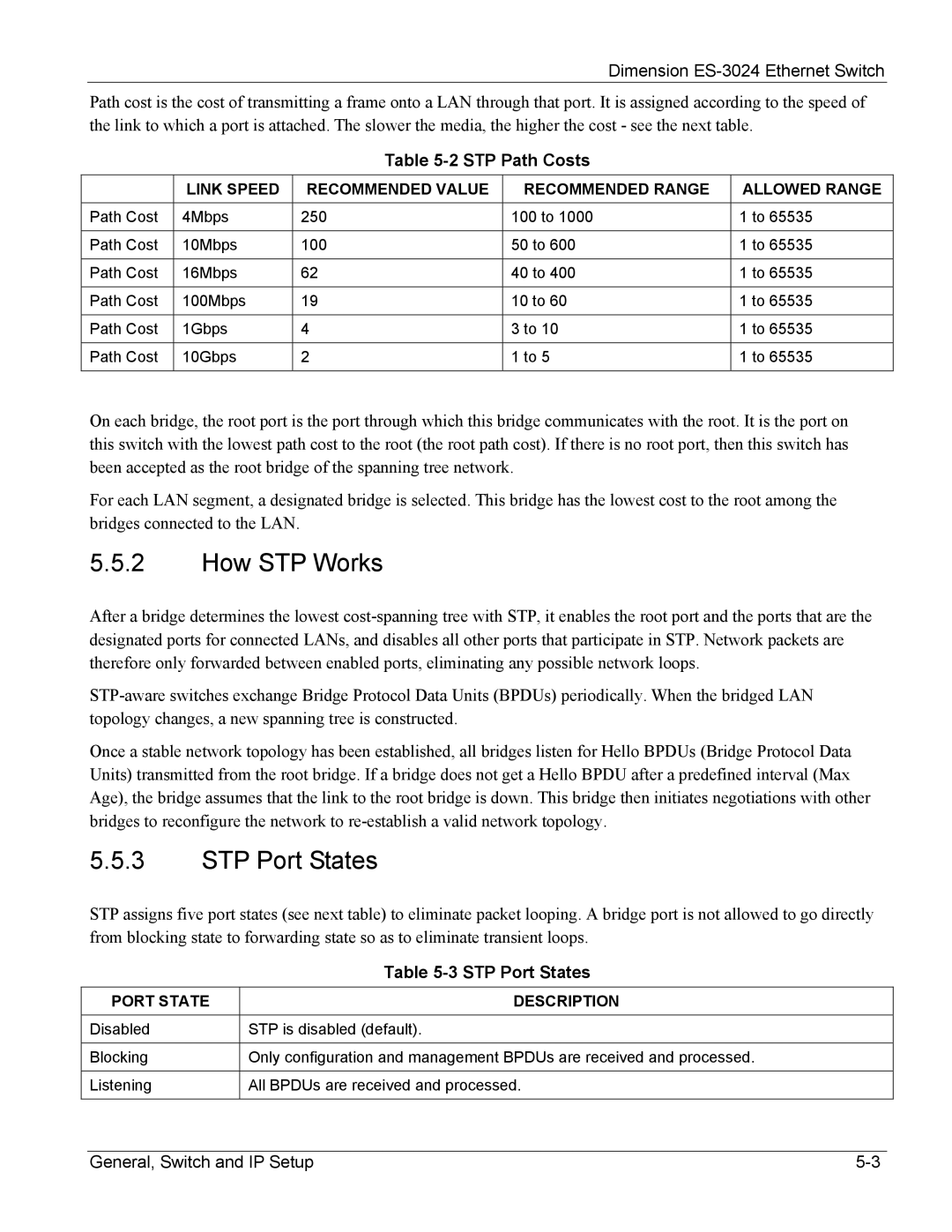Dimension
Path cost is the cost of transmitting a frame onto a LAN through that port. It is assigned according to the speed of the link to which a port is attached. The slower the media, the higher the cost - see the next table.
Table 5-2 STP Path Costs
| LINK SPEED | RECOMMENDED VALUE | RECOMMENDED RANGE | ALLOWED RANGE |
|
|
|
|
|
Path Cost | 4Mbps | 250 | 100 to 1000 | 1 to 65535 |
|
|
|
|
|
Path Cost | 10Mbps | 100 | 50 to 600 | 1 to 65535 |
|
|
|
|
|
Path Cost | 16Mbps | 62 | 40 to 400 | 1 to 65535 |
|
|
|
|
|
Path Cost | 100Mbps | 19 | 10 to 60 | 1 to 65535 |
|
|
|
|
|
Path Cost | 1Gbps | 4 | 3 to 10 | 1 to 65535 |
|
|
|
|
|
Path Cost | 10Gbps | 2 | 1 to 5 | 1 to 65535 |
|
|
|
|
|
On each bridge, the root port is the port through which this bridge communicates with the root. It is the port on this switch with the lowest path cost to the root (the root path cost). If there is no root port, then this switch has been accepted as the root bridge of the spanning tree network.
For each LAN segment, a designated bridge is selected. This bridge has the lowest cost to the root among the bridges connected to the LAN.
5.5.2How STP Works
After a bridge determines the lowest
Once a stable network topology has been established, all bridges listen for Hello BPDUs (Bridge Protocol Data Units) transmitted from the root bridge. If a bridge does not get a Hello BPDU after a predefined interval (Max Age), the bridge assumes that the link to the root bridge is down. This bridge then initiates negotiations with other bridges to reconfigure the network to
5.5.3STP Port States
STP assigns five port states (see next table) to eliminate packet looping. A bridge port is not allowed to go directly from blocking state to forwarding state so as to eliminate transient loops.
| Table |
PORT STATE | DESCRIPTION |
|
|
Disabled | STP is disabled (default). |
|
|
Blocking | Only configuration and management BPDUs are received and processed. |
|
|
Listening | All BPDUs are received and processed. |
|
|
General, Switch and IP Setup |
